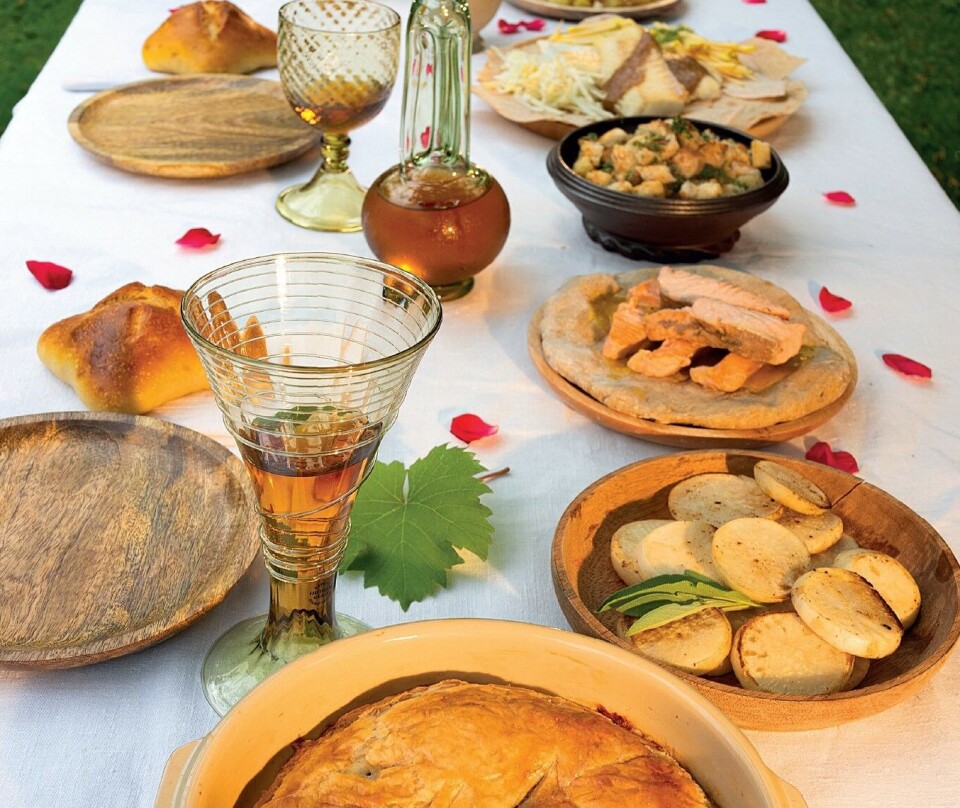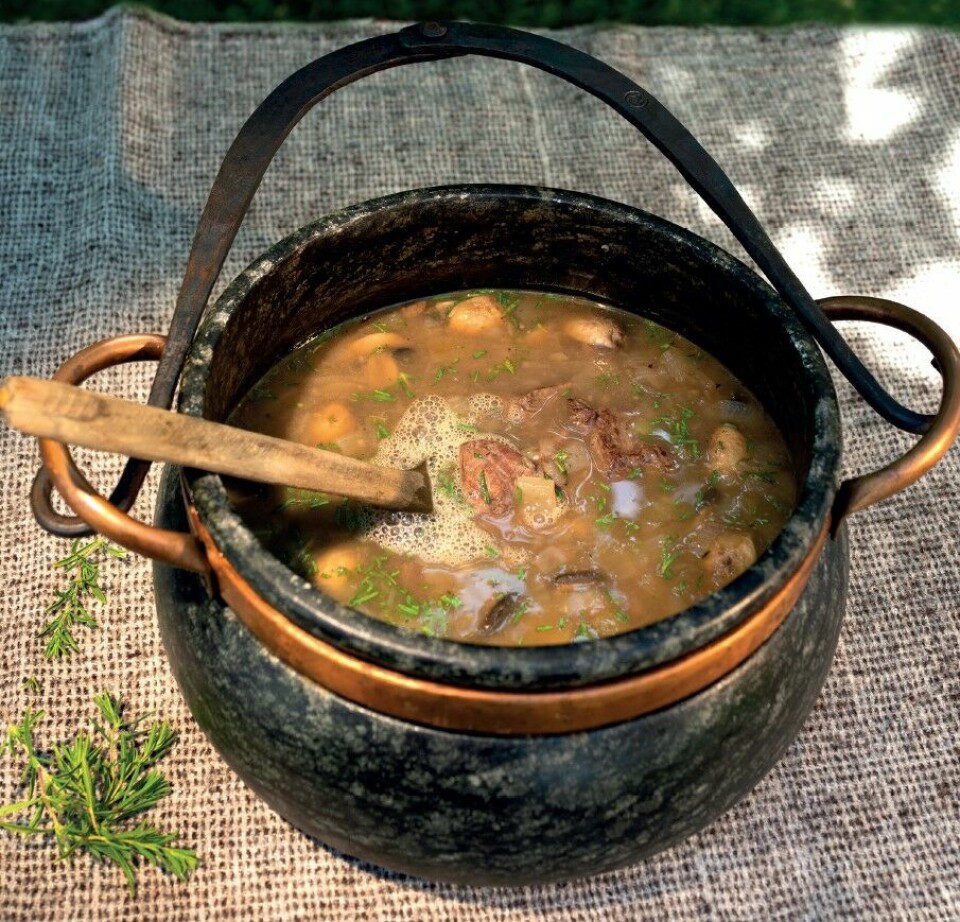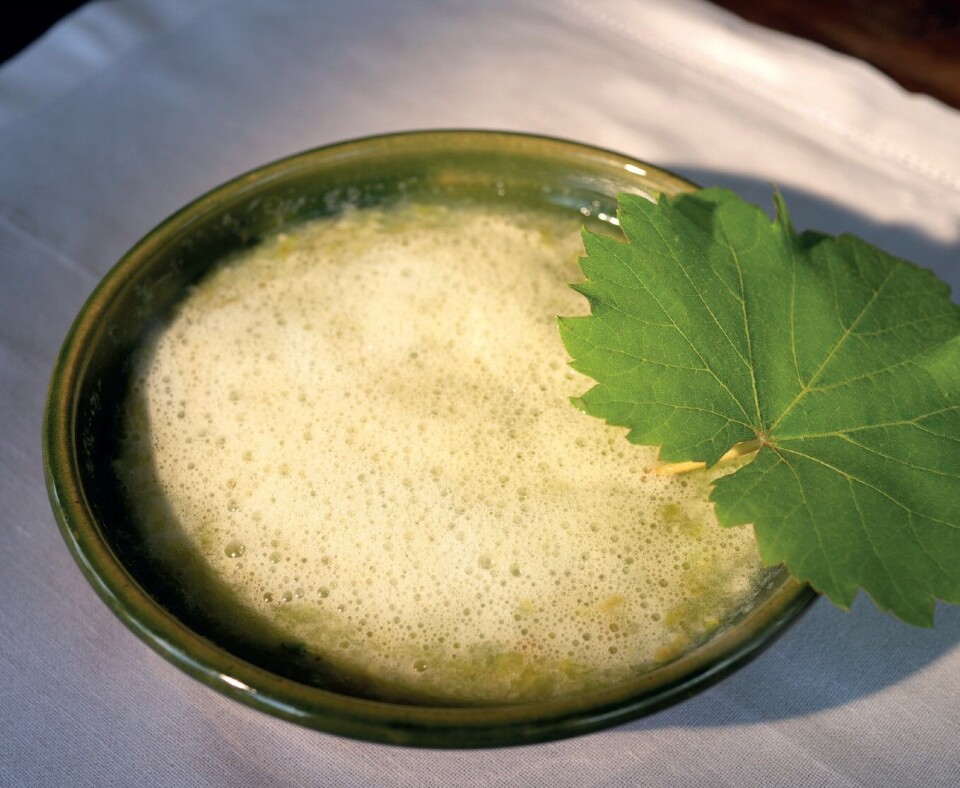
Medieval Norwegian food was more flavourful than you might think
Exotic spices were first exclusive, then became common — until Norwegians stopped seasoning their food.
“Spices probably became popular in Norway at the beginning of the Middle Ages, from the middle of the 12th century,” says Marianne Vedeler, the author of a new Norwegian book on medieval food.
“People cooked local vegetables and meat, and seasoned their food with imported, exotic spices. At the beginning, only rich people could afford these imported goods, but later, spices became common household items,” Vedeler said.
The most important spices were saffron, cloves, nutmeg, cardamom, ginger and cinnamon.
Today's recipes for traditional Norwegian food, such as pinnekjøtt, a type of stewed lamb ribs; fårikål, stewed mutton and cabbage; lutefisk; and lapskaus, a type of meat stew, are only seasoned using salt and pepper.
“Those foods were adopted much later, when the Middle Ages ended around the year 1500. That’s when people stopped seasoning their food the way they used to. We don't know why,” Vedeler said.
New foods for Norway
What we call the Middle Ages began in the 11th century. The Viking Age had ended, and Christianity was introduced to Norway. Most people were farmers, but cities were growing. Trade with Europe picked up, and new foods arrived by ship to Norway.
“Lots of figs have been found in the outhouses from the Middle Ages. Wine and fresh or dried grapes were used in food. A little sugar was probably imported, but the most important sweetener was honey,” Vedeler said.
Vedeler is a professor of archaeology at the University of Oslo’s Museum of Cultural History. In recent years, she and her colleagues have studied medieval food culture, including examining old soapstone pots.
“These kinds of pots were standard equipment for most people. The soapstone holds the heat for a long time, so they consumed very little energy. What's more, the whole pot heats up evenly,” said Vedeler, who has acquired a soapstone pot for her own use.

Fish cooked in red wine
People cooked meat, fish and vegetables in these pots.
“When the pots were broken, the shards were thrown into the ashes or onto a rubbish heap without being washed. That’s how we have been able to find thick layers of food residue, which have now been analyzed at a laboratory in France,” Vedeler said.
The researchers thought they would find a lot of leftover porridge, but found great variation in the raw materials.
“We often find a mixture of fish and fermented grapes, like a medieval red wine. Fish and red wine sounds disgusting to us today, but I have experimented to come up with a good recipe with orange wine and cuttlefish,” she said.
Vedeler’s book on medieval food, called ‘Middelalderens kjøkken’ (The Medieval Kitchen), also contains recipes. These recipes are based on three booklets from the Middle Ages, as well as what is known of food and preparation from archaeological excavations, along with price and import lists and other historical sources.
Marianne Vedeler likes to cook. Over many years, she has tested recipes on her children, family and friends.

Food was medicine
Vedeler’s challenge has been that the old recipes say which ingredients to use, but not how much of each and how they should be prepared. This has led to a lot of experimentation.
“My children have grown up on medieval food. They think it's completely normal,” she said.
While ordinary people cooked their food on an open hearth in small wooden houses, the very richest had their own kitchens and often a professional chef.
“The chefs were well schooled in medieval food philosophy. Food was also medicine,” says Vedeler.
Good health lay in the balance between what medieval people believed to be the body's four fluids: blood, phlegm, black and yellow bile. Food and drink were not only about taste and nutrition, but also had to ensure that the body was in balance.
Most viewed
Both the philosophy and the recipes came from Europe. The Norse recipes are copies or extensions of things written in Germany and France, Vedeler said.
Enjoyed Norwegian pancakes
Another researcher who is interested in food from the Middle Ages is Karl Christian Alvestad, an associate professor of history at the University of South-Eastern Norway.
“I use recipe booklets, but also descriptions of dishes and meals in literature from the Middle Ages,” Alvestad said to sciencenorway.no.
The story of the merchant Pietro Querini is one source for information about food and everyday life in the Norwegian Middle Ages. In 1432, an Italian merchant ship sank off Røst in Lofoten. The crew came ashore and stayed on Røst for four months.
“For example, Querini really liked the pancakes they were served,” Alvestad said.
Many of the written sources are European, not Norwegian.
“Norway was part of the European food culture, although there were local variations based on raw materials and access,” says Alvestad.
The Catholic Church had a great deal of influence on Norway after the country became Christian.
“The Church regulated everyday life and meals throughout Europe, including in Norway. It decided which days people could not eat meat, that they had to eat fish on Fridays, that they should not eat horse and that they should fast before Christmas and Easter,” Alvestad said.

Teaching with pies
The requirement to eat fish led to a demand for dried fish and salted herring, of which Norway had a lot.
“This helped boost the export of fish from Norway to the rest of Europe,” Alvestad said.
He uses the example of an apple pie from the 15th century when teaching student teachers about the Middle Ages.
The pie contains apples, but also imported figs, raisins, saffron and pepper.
“Food is a good approach to encouraging curiosity in students. I put the apple pie in an economic and political context, with the Viking Age, trade, crusades and the Black Death,” says Alvestad.
The Crusades from Europe to the Middle East led to more trade.
“Crusaders encountered new foods that they brought home, and that then created a demand. It’s the same as how modern tourism has contributed to more variety in the Norwegian diet,” says Alvestad.
Common people's food
Many of the
ingredients were the same today and in medieval food culture, even if they didn't have potatoes and sugar, according to Alvestad.
“They used more spices and probably had a more exciting taste horizon than today's traditional Norwegian food,” says Alvestad.
Although the recipes that have been preserved are for wealthy people’s food, archaeologists have made many discoveries that illustrate how ordinary people lived and ate.
One important source is an archaeological excavation in Oslo.
“Most people had a practical stove, which was mass-produced from soapstone or slate. They could fry everything on it, including flatbreads and lefse,” Vedeler said. Lefse is a soft, rolled-up flatbread often served with butter, cinnamon and sugar.

Examinations of skeletons from a cemetery in Oslo showed that the people buried there had had a fairly varied diet.
Mostly beef, little chicken
“They ate meat, but we don't know how much. Presumably it was much less than we eat today. Beef was most common, followed by sheep and goat and some pork,”
Vedeler said.
Chicken meat was probably a luxury food. The bishop in Oslo built a new hall in the 15th century with European decor and crockery. Animal bones found at the site show that they ate chicken, and preserved recipes mention chicken pies, casseroles and stews. Smaller chicken bones have been found in other parts of the city.
Vedeler has found a recipe for chicken drumsticks baked in pasta.
“They are very good, but a dish of expensive chicken meat and expensive wheat flour was high-status food,” she says.
Flat breads
Given the climate, Norwegian farmers mainly grew barley and oats. These cereals contain little gluten, which makes it difficult for the bread to rise.
“Making leavened bread required imported rye and wheat and an oven, which only the rich had. Most people probably made flatbreads, like flatbreads and lefse,” she said.
“Bread was also used as thickener, instead of flour. It works very well and is also a smart thing to do if we are going to use up everything,” says Vedeler.

They were careful with their food, it had to last through the winter.
“The growing season in Norway is very short. Moreover, the customs lists show that the ships stopped coming in October. To survive, they had to dry, salt, pickle and ferment their food,” she said.
The a-ha experience that turned into a book
Medieval recipes rarely describe how to make common food — the foods that everyone knew how to cook, such as bread, porridge and vegetable dishes.
“But we can see from plant remains that people consumed a great variety of fruit and vegetables. They also ate many more types of fish than we usually do today,” says Vedeler.
In one kitchen midden on an island in the Oslo fjord, they found 21 different species of fish.
“I think that's cool. Today's grocery stores, in contrast, often have very few kinds,” says Vedeler.
The medieval food project started in the basement of the Museum of Cultural History.
“I had an a-ha experience while we were cleaning up down there. An awful lot archaeological material we have has to do with food. That made me think that we should do something about this topic,” Vedeler said.
One of the results is the book ‘Middelalderens kjøkken’ with recipes adapted to modern ingredients and tastes.
“The only recipe I myself am not that excited about is white mash,” Vedeler said.
This is a mixture of milk, white bread, eggs and spices that is boiled into a porridge. But the archaeologist strongly recommends first trying your hand at fish and wine.
Translated by Nancy Bazilchuk
———
Read the Norwegian version of this article at forskning.no





































